My Top Fashion Looks from NYFW A/W 2015
/I've never attended New York Fashion Week, but have always wanted to go. Especially now, since I'm in the process of launching a creative consulting company that offers wardrobe consulting services among other things, I really need to stay current. And what better way to do that than to be at the shows, watching beautiful designs in real time with real people. I can just imagine the energy. But until I get the opportunity to go (which I'm hoping will be very soon), I'll take the internet. And what a buzz NYFW stirred this week. Did you catch it? With all the online mags and social media capturing every immediate moment, it almost felt like I was there. Many of the clothes were luxurious with lots of volume and references to vintage glamour. There were so many great looks to choose from, but I only chose a few, 27 to be exact. So grab some coffee, and sit down with me as I comment on each of the looks in "editor-like" fashion. (All pics are from Vogue, and the links are included in the commentary).

This Christian Siriano dress has 1940's vintage appeal for sure. The structured, voluminous wing-like sleeves make it feel modern and feminine.
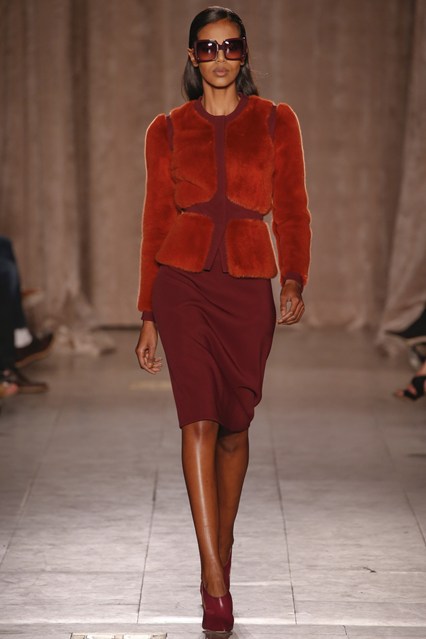
This model is workin' it at the Zac Posen show. Love the tailored fur blazer.

And who doesn't want a big bright blue fur coat? It looks like so much fun, and I believe in having fun with fashion. See Altuzarra.
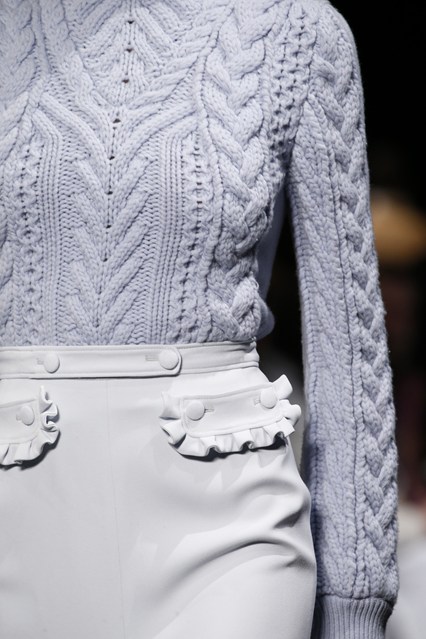
Detail, details, details. And while most cable knit sweaters are bulky, I can really appreciate a sweater that is chunky enough to look warm and cozy, yet slim-fitting enough to be tucked in. See Altuzarra.
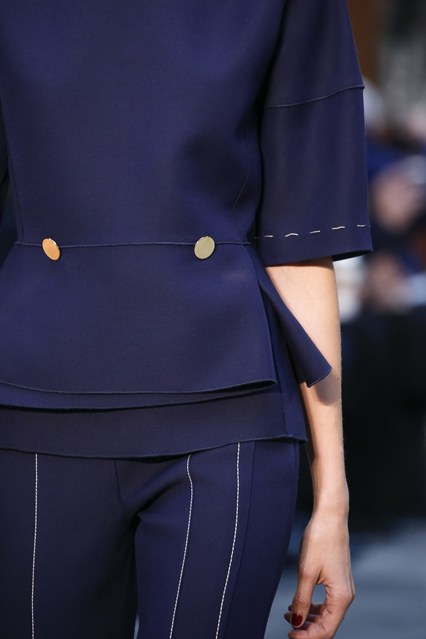
Exquisite tailoring here at the Derek Lam show.

This shapely, detailed Derek Lam coat is a modern interpretation of a classic trench—nice.
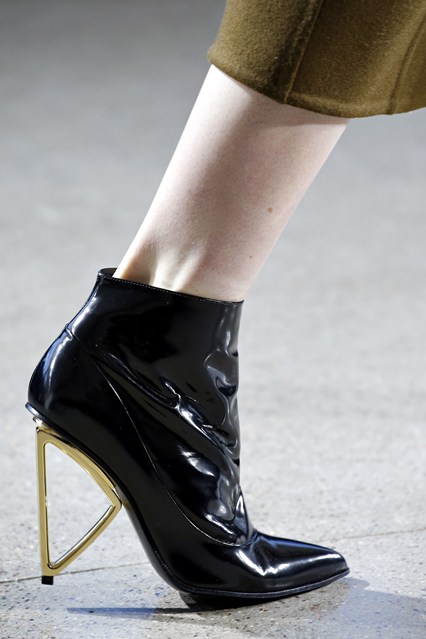
Yesss! Love the gold angular heel on these Jason Wu booties.
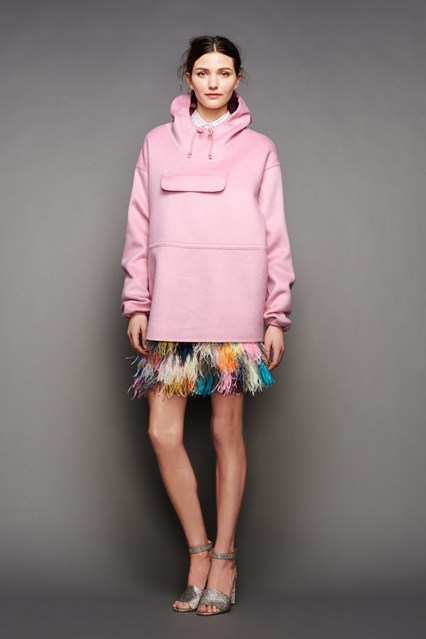
I adore J-Crew . Here's a great example of how they experiment with proportions, and are still able to appeal to the masses. So fresh and modern.
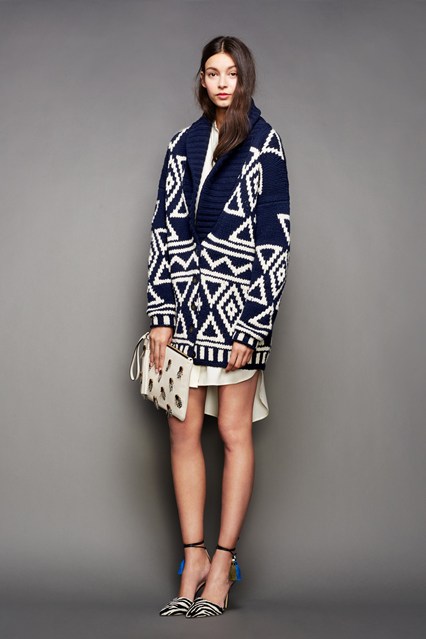
More lovely J-Crew. And my eyes go straight to the cute little tassels on these shoes.
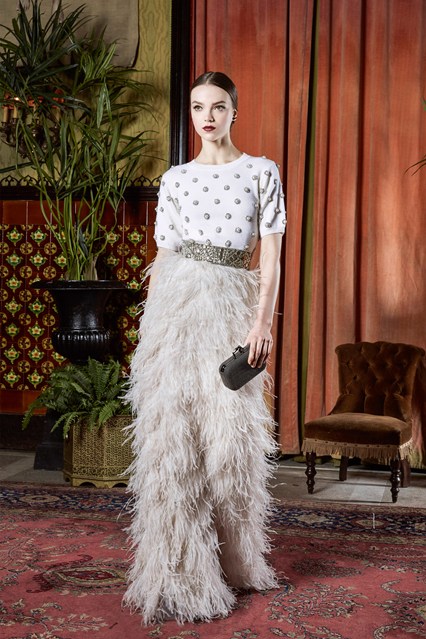
Feathers, dots, and leather, oh my! I really enjoy juxtaposition in fashion, and here it is at its finest with a casual sweater combined with a luxurious floor-length feathered skirt. The 3-D dots add interest that compliment the dramatic feathers. See Alice and Olivia.
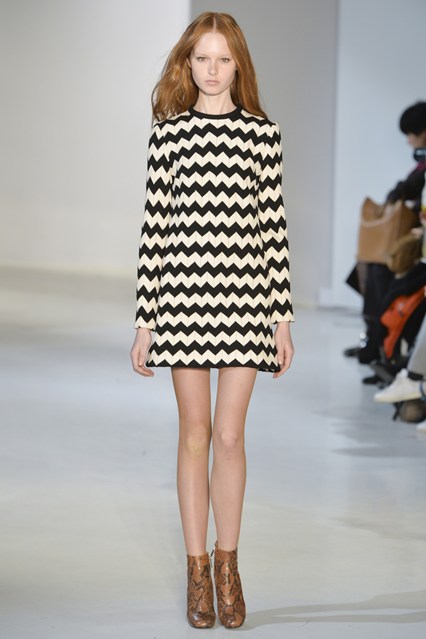
I must admit, I've been growing really tired of Chevron. But it is too cute on this 60's inspired mini-dress. I wonder if Marsha Brady would have worn this? See Jill Stuart.
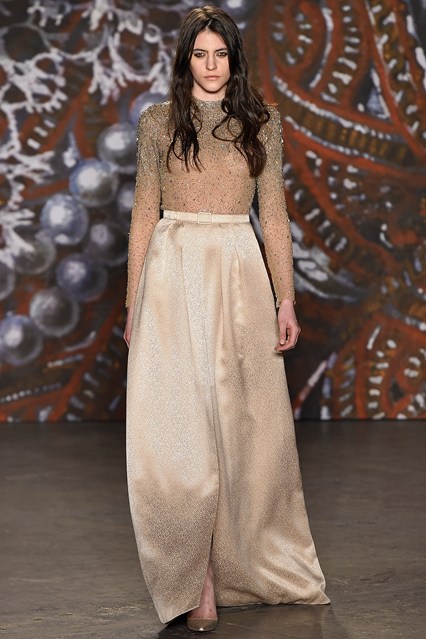
Vavoom! Modern glamour all the way. I really love how the skirt has structure, volume, and movement. See Jenny Packham.
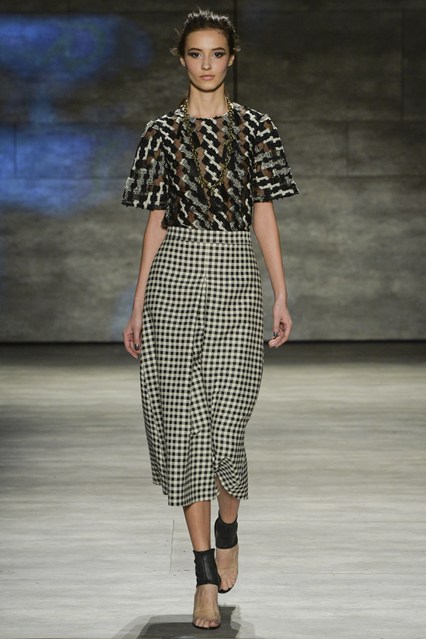
The subtle reference to the 70's, the mix-n-match patterns, and the edgy shoes are all pulled together to create this modern, feminine Lela Rose ensemble.
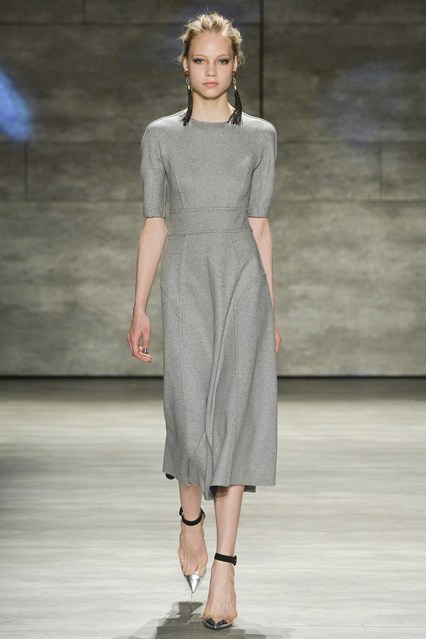
The tassel earrings on this refined Lela Rose dress adds just the right amount of whimsy to keep things interesting.
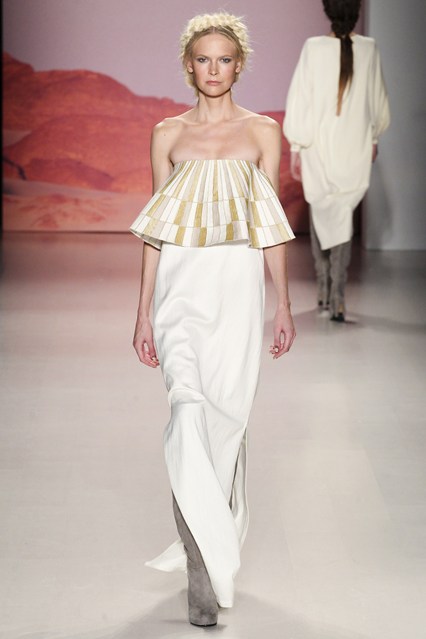
This Mara Hoffman dress has gorgeous lines. It's like an updated 70's strapless empire waist dress, the one with the frilly layer at the bust. I really like how she structured what was typically a ruffle, and infused it with ethnic inspired glamour.
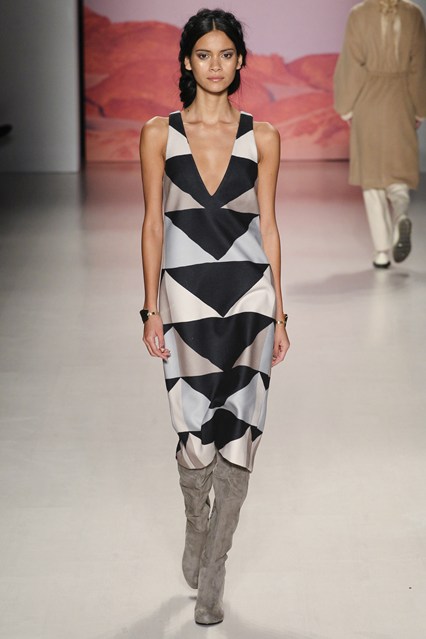
Love this easy-going, bold print Mara Hoffman dress. It's reads cool luxury.
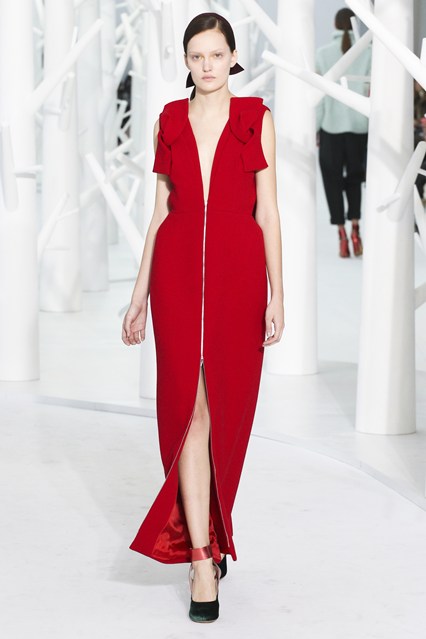
I haven't worn a red dress in forever, and I'm not typically drawn to red. But this Delpozo dress is everything. I don't think I'd be able to wear it because my busts are too big, but it has great modern lines. And the details on the arms are dramatic, quirky and feminine, all elements I love in a dress.
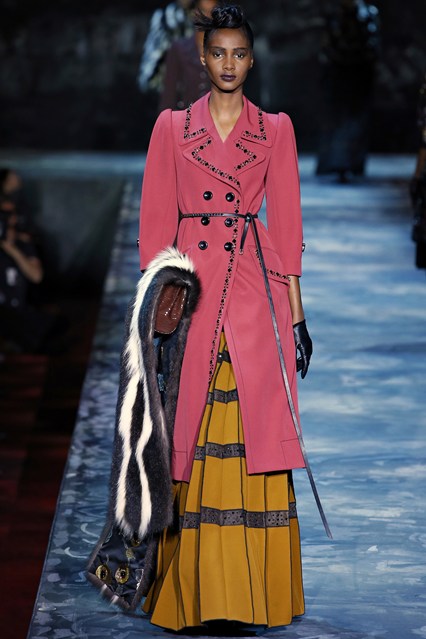
Hello 19th century! (I hate to keep saying it but) Love, love, love. As a girl who was obsessed with Little House in the Prairie as a child, I have a special affinity for this look. The colors, the textures, the proportions— and is that piping detail on the skirt? Love you Marc Jacobs.

What's not to love about a matching sweater suit? And that reinterpreted pompadour— very creative. See A Detacher.
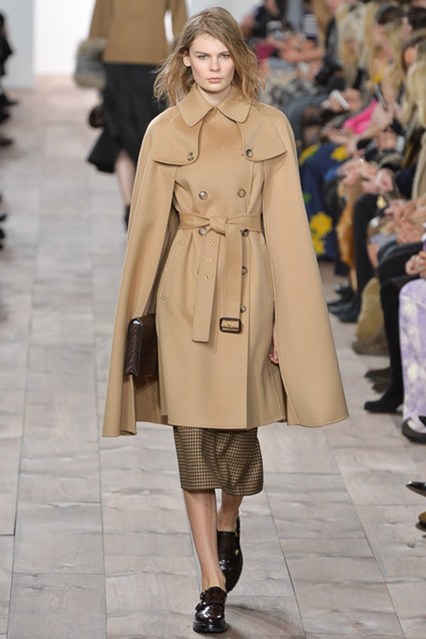
My mom had a cape coat similar to this one but I gave it away. At the time, it was so dramatic, and I didn't think I could pull it off. Darn, I should have kept it. See Michael Kors.
 Modern shapes, clashing patterns— perfect. These patterns work because black is the common denominator and balances out all the cool, kooky lines. See Milly.
Modern shapes, clashing patterns— perfect. These patterns work because black is the common denominator and balances out all the cool, kooky lines. See Milly.
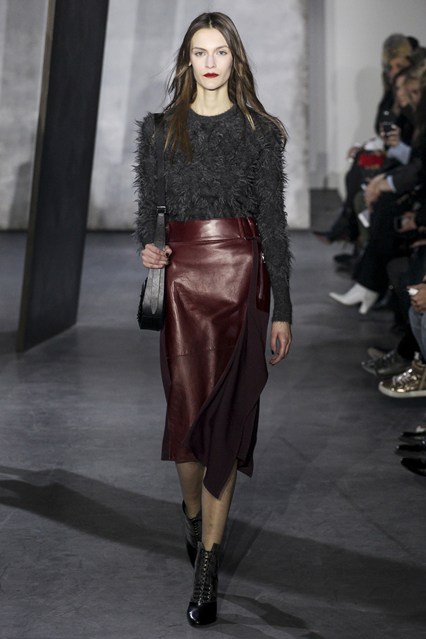
This Philip Lim outfit is sophisticated and edgy with its burgundy (or should I say Marsala) leather skirt and feathered sweater.
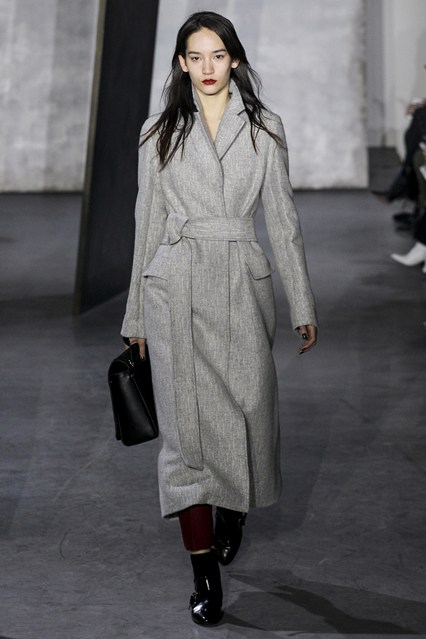
Philip Lim is on a roll with this utility inspired, tie-wasted coat. It's what I like to call "the husband coat," the one the Mrs. puts on quickly (with not much on underneath) to go outside for the mail because hers is too far away. (As you can see, I think deeply about these things).
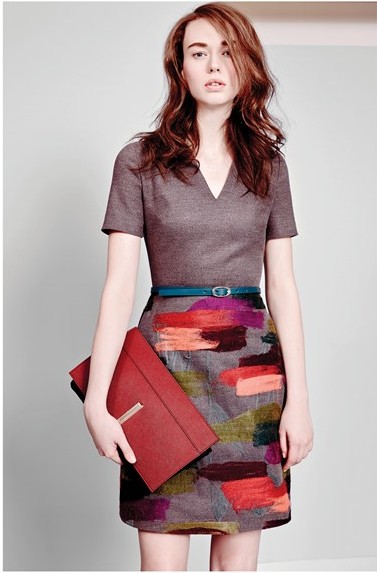
Simple and lovely with a little abstract print to add interest. See Raoul.
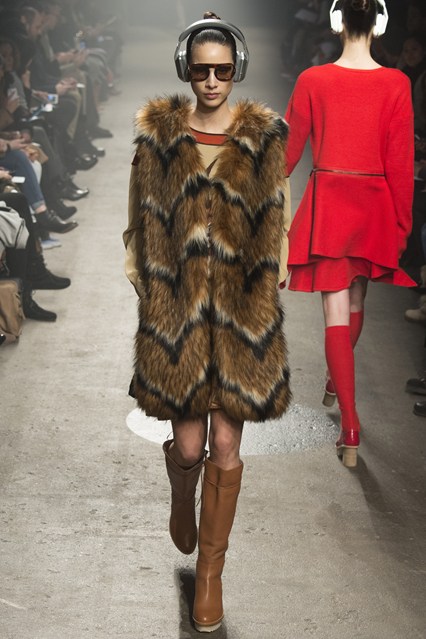
This is vintage 70's glamour all the way. Love how the headphones add a little urban touch. See Tracy Reese.
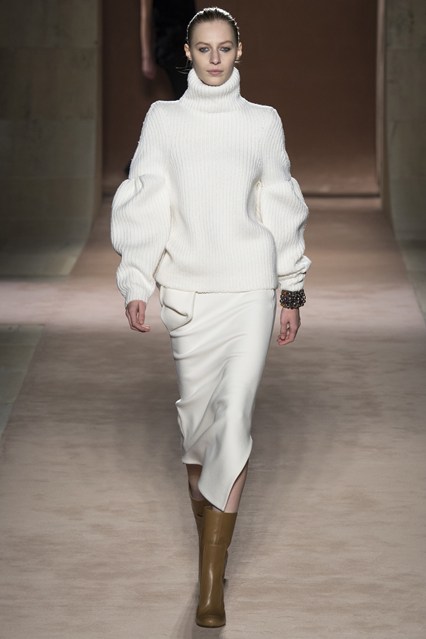
The sleeves are everything in this Victoria Beckham ensemble.
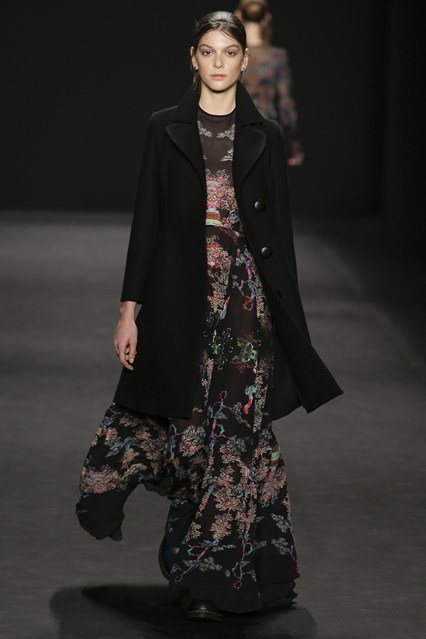
This look reminds me of a beautiful 19th century lady running from the manor in desperation after her parents forbid her to marry her one true love simply because he is the son of a farmer. Don't you get that vibe? ...I really like how the tailored coat off-sets the ornate, exotic flowing dress. See Vivenne Tam.
So there you have it folks. Hope you've enjoyed my pics. What are some of your favorite looks from NYFW?


 Of course, there are many more items that would fit into these categories. If you come across them, feel free to share them here. I'm always on the look out for cool nursery furniture or toys.
Of course, there are many more items that would fit into these categories. If you come across them, feel free to share them here. I'm always on the look out for cool nursery furniture or toys.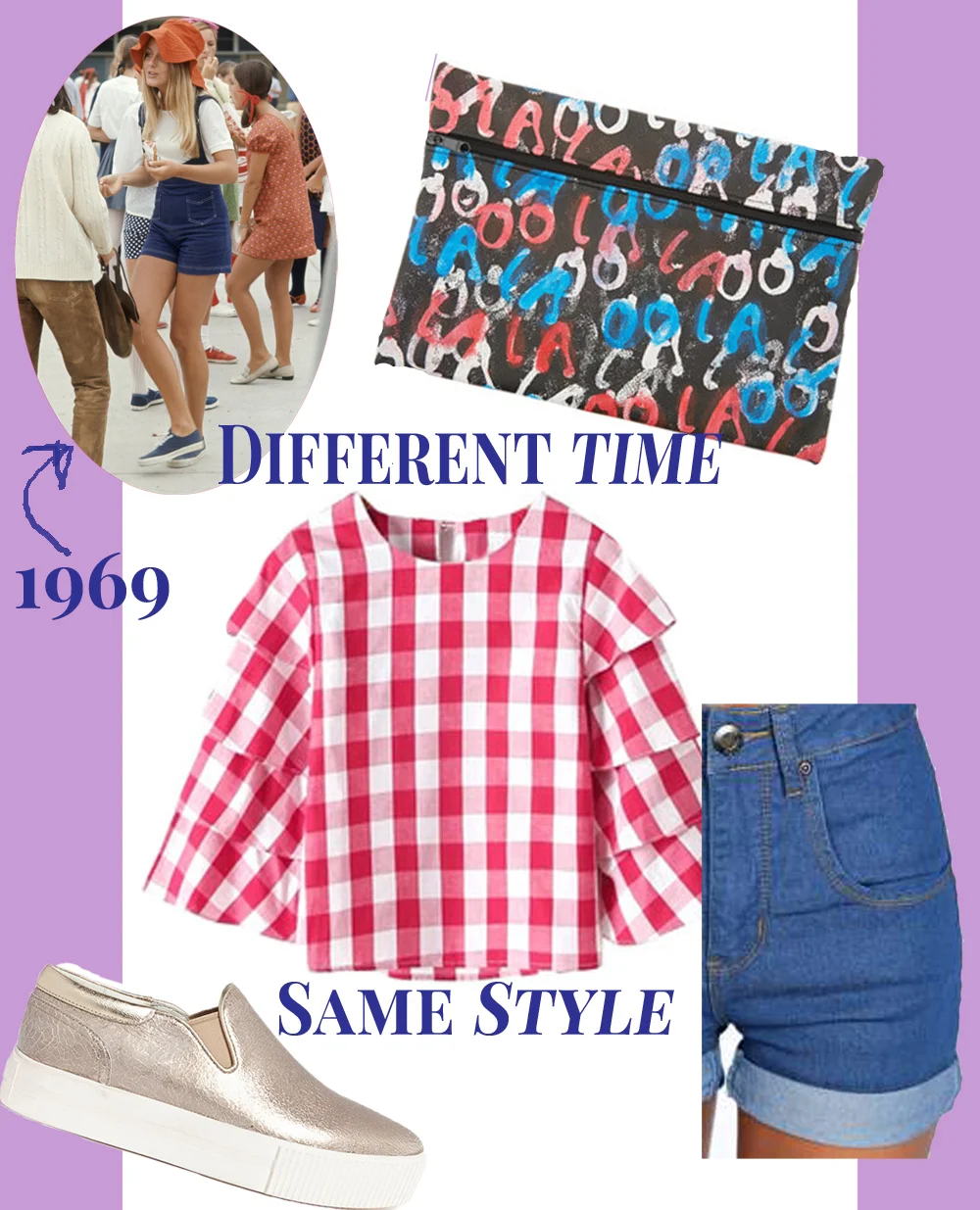



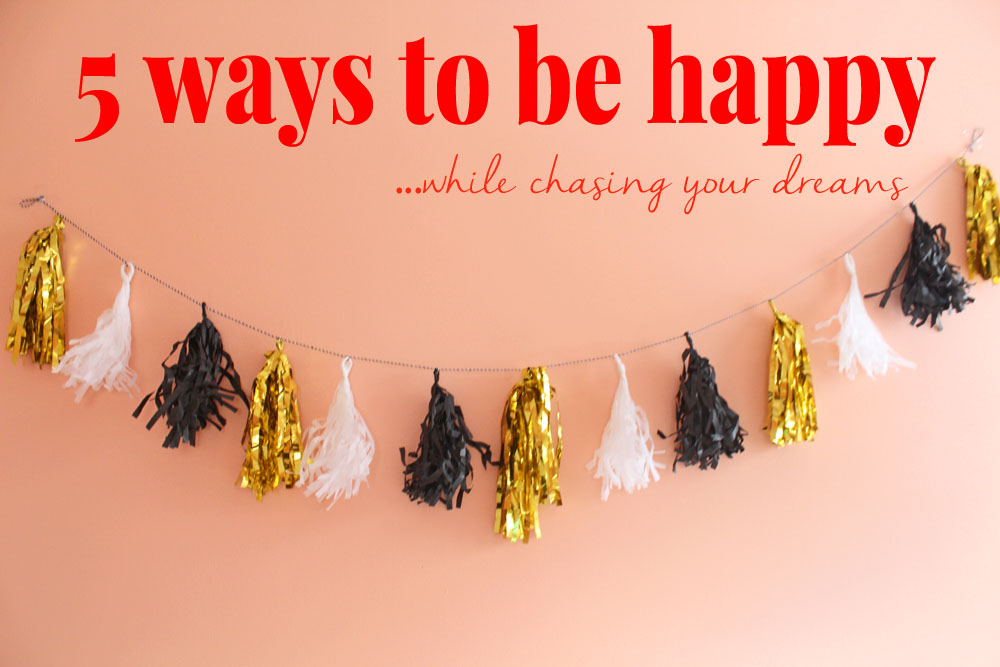 Now graduate school seems like a distant memory, and although I wasn't quit sure what my career would look like, I never imagined that I would find new dreams to chase--I mean really big ones. I'm currently in the midst of developing a consulting business and it's the same process all over again-- the process of pushing to see my ideas come to life and blossom.
Now graduate school seems like a distant memory, and although I wasn't quit sure what my career would look like, I never imagined that I would find new dreams to chase--I mean really big ones. I'm currently in the midst of developing a consulting business and it's the same process all over again-- the process of pushing to see my ideas come to life and blossom.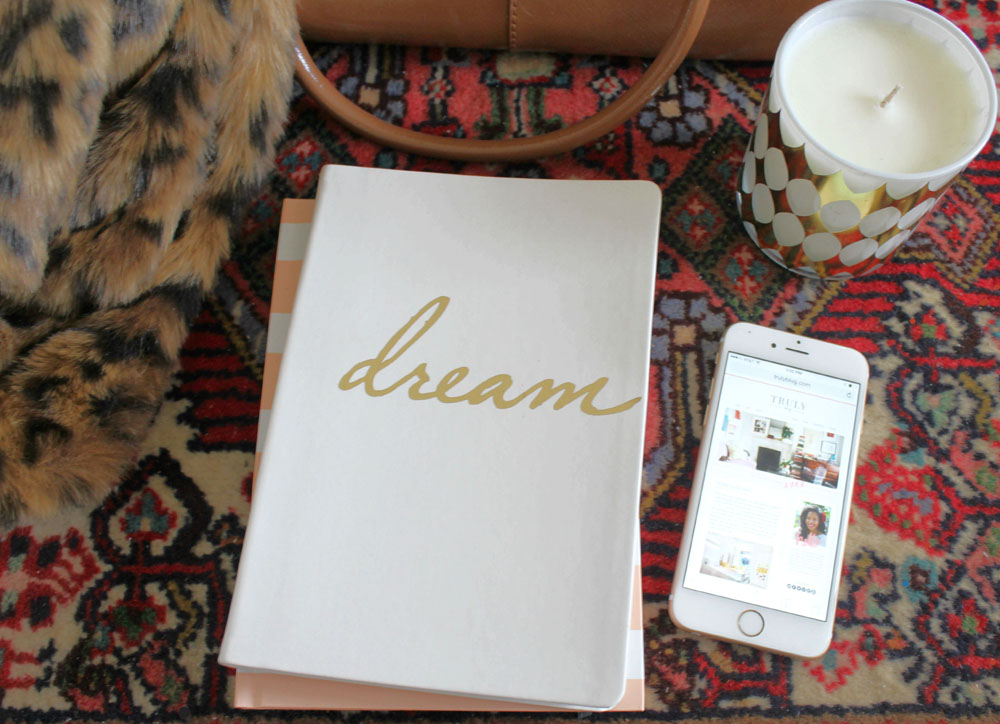 1. Write down what you want your future self to say about you. Imagine your 85-year-old self. What do you want her (or him) to say about you at your age? With all that hard work you put in, wouldn't it be a shame to look back and think wow, I was never really happy. Your time is a precious commodity, something you'll never get back. So be conscious about acting in ways that will make your 85-year-old self look back and smile. Don't let negativity steal your joy and ultimately your life.
1. Write down what you want your future self to say about you. Imagine your 85-year-old self. What do you want her (or him) to say about you at your age? With all that hard work you put in, wouldn't it be a shame to look back and think wow, I was never really happy. Your time is a precious commodity, something you'll never get back. So be conscious about acting in ways that will make your 85-year-old self look back and smile. Don't let negativity steal your joy and ultimately your life.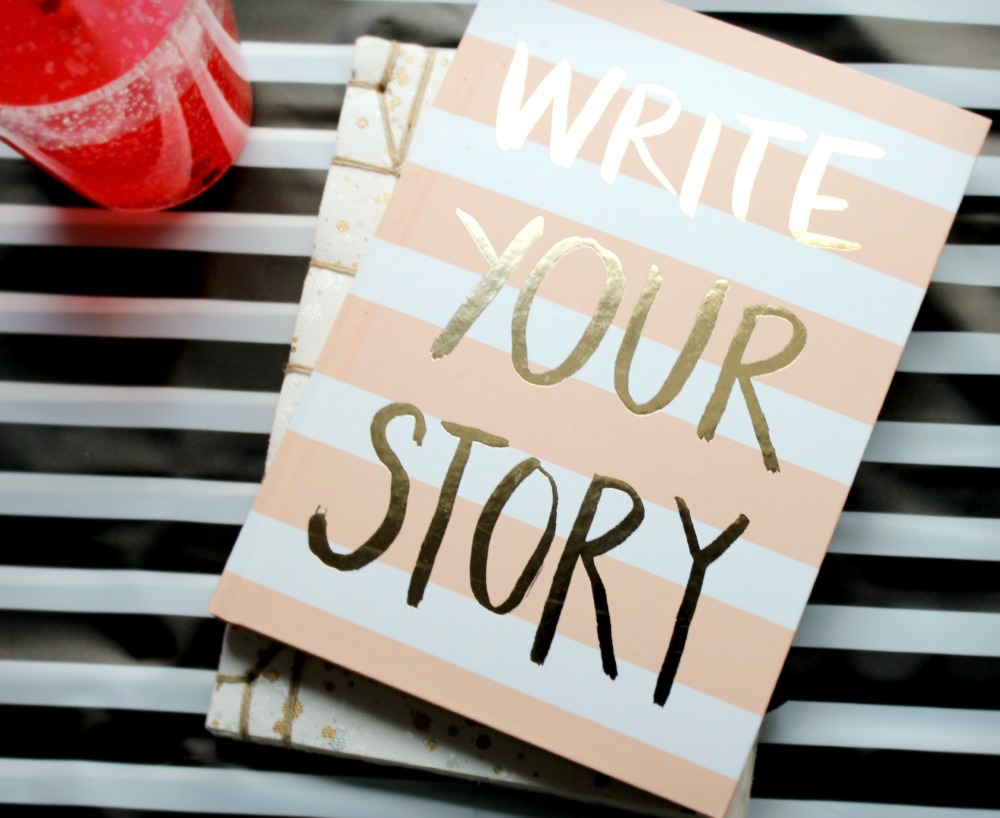 3. Listen to the encouraging words of others. There's a lot of negativity out there and people can keep you from accomplishing your goals if you let them. They might even mean well, but sometimes people have a way of distracting us with their own drama. On the other hand, there are people who can relate to where you are in life and have a lot to say about your journey. These people can be great sources of inspiration, and give you the lift you need to feel good about maneuvering through the process, even when the process doesn't feel so good. I'm a very spiritual person and love to listen to preachers and speakers who reinforce my faith in God and the life He has destined for me.
3. Listen to the encouraging words of others. There's a lot of negativity out there and people can keep you from accomplishing your goals if you let them. They might even mean well, but sometimes people have a way of distracting us with their own drama. On the other hand, there are people who can relate to where you are in life and have a lot to say about your journey. These people can be great sources of inspiration, and give you the lift you need to feel good about maneuvering through the process, even when the process doesn't feel so good. I'm a very spiritual person and love to listen to preachers and speakers who reinforce my faith in God and the life He has destined for me. 5. Force yourself to enjoy the rewards along the way. Yes, I mean force. Most of us have heard that it's important to reward yourself for the little things along your journey. But many of us give lip service and say we'll do it, yet never do. I think it may be because it is so far removed from what we are used to doing, and rewarding ourselves just takes up too much time--but it doesn't have to. It's more about having an appreciative mindset than it is about tangible rewards. You can reward yourself just by feeling proud that you've accomplished one or two things off of your to-do list. Think of it as practice for when you achieve those bigger accomplishments. If you don't learn to be happy with the little accomplishments, despite the setbacks along the way, you won't be happy with the big ones because there are always going to be new goals to conquer.
5. Force yourself to enjoy the rewards along the way. Yes, I mean force. Most of us have heard that it's important to reward yourself for the little things along your journey. But many of us give lip service and say we'll do it, yet never do. I think it may be because it is so far removed from what we are used to doing, and rewarding ourselves just takes up too much time--but it doesn't have to. It's more about having an appreciative mindset than it is about tangible rewards. You can reward yourself just by feeling proud that you've accomplished one or two things off of your to-do list. Think of it as practice for when you achieve those bigger accomplishments. If you don't learn to be happy with the little accomplishments, despite the setbacks along the way, you won't be happy with the big ones because there are always going to be new goals to conquer.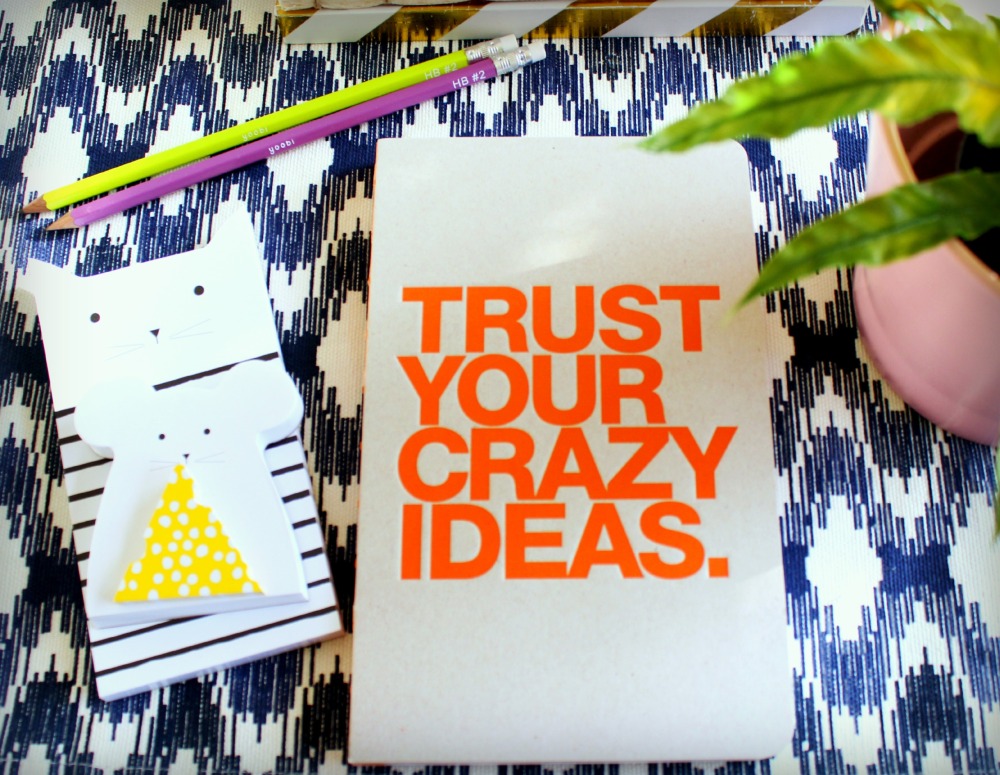 Know that being happy through the process doesn't mean feeling happy all the time. It's more about being content with your life, with YOU, through the good, the bad, and the ugly. And really, this is the ultimate accomplishment, because what's better than looking back and knowing you were happy.
Know that being happy through the process doesn't mean feeling happy all the time. It's more about being content with your life, with YOU, through the good, the bad, and the ugly. And really, this is the ultimate accomplishment, because what's better than looking back and knowing you were happy.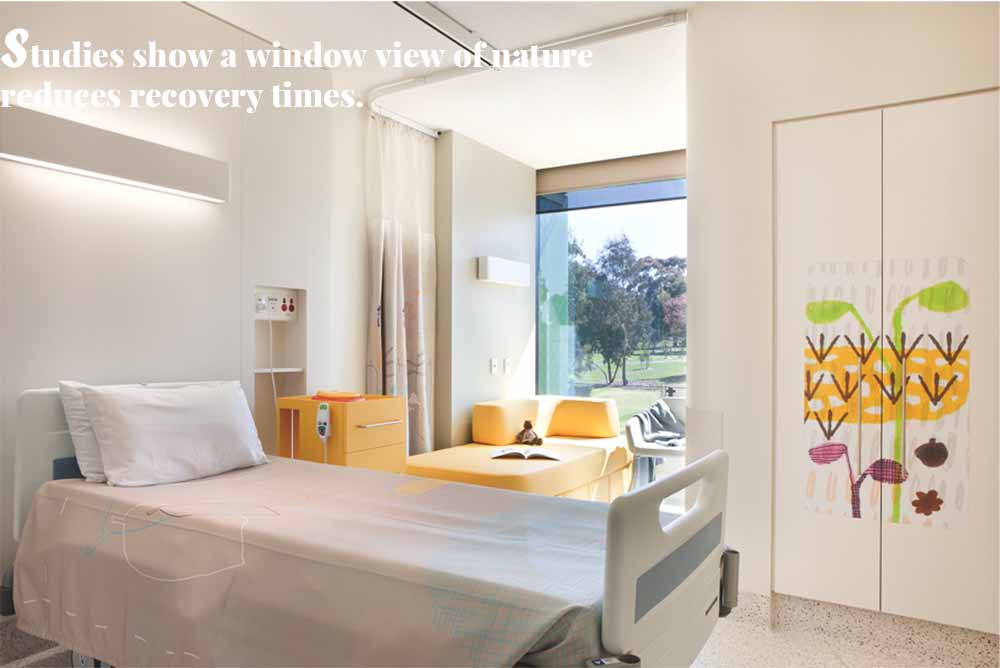 Not a whole lot is known about the relationship between physical health and healing spaces, but
Not a whole lot is known about the relationship between physical health and healing spaces, but 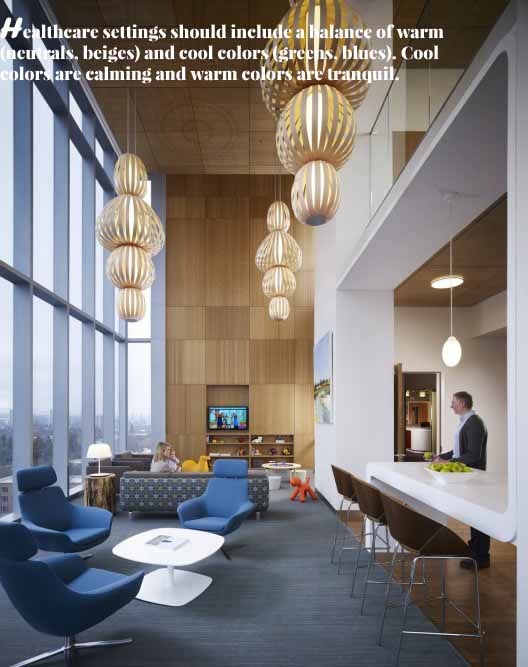 During the workshop, Toby talked about the keys to creating healing spaces in healthcare facilities including hospitals, nursing homes, and assisted living. Of utmost importance is designing elements that helps patients feel in control, and loved and supported. Patients should be engaged in the creative process (such as through focus groups) and elements should reflect an emphasis on the future and moving forward.
During the workshop, Toby talked about the keys to creating healing spaces in healthcare facilities including hospitals, nursing homes, and assisted living. Of utmost importance is designing elements that helps patients feel in control, and loved and supported. Patients should be engaged in the creative process (such as through focus groups) and elements should reflect an emphasis on the future and moving forward.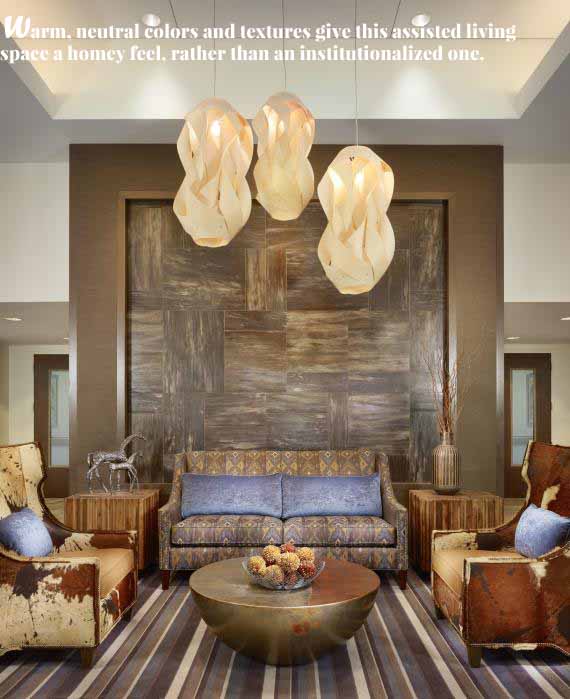 There are many design psychology exercises that can be utilized to achieve healing spaces. I've mentioned some of them
There are many design psychology exercises that can be utilized to achieve healing spaces. I've mentioned some of them 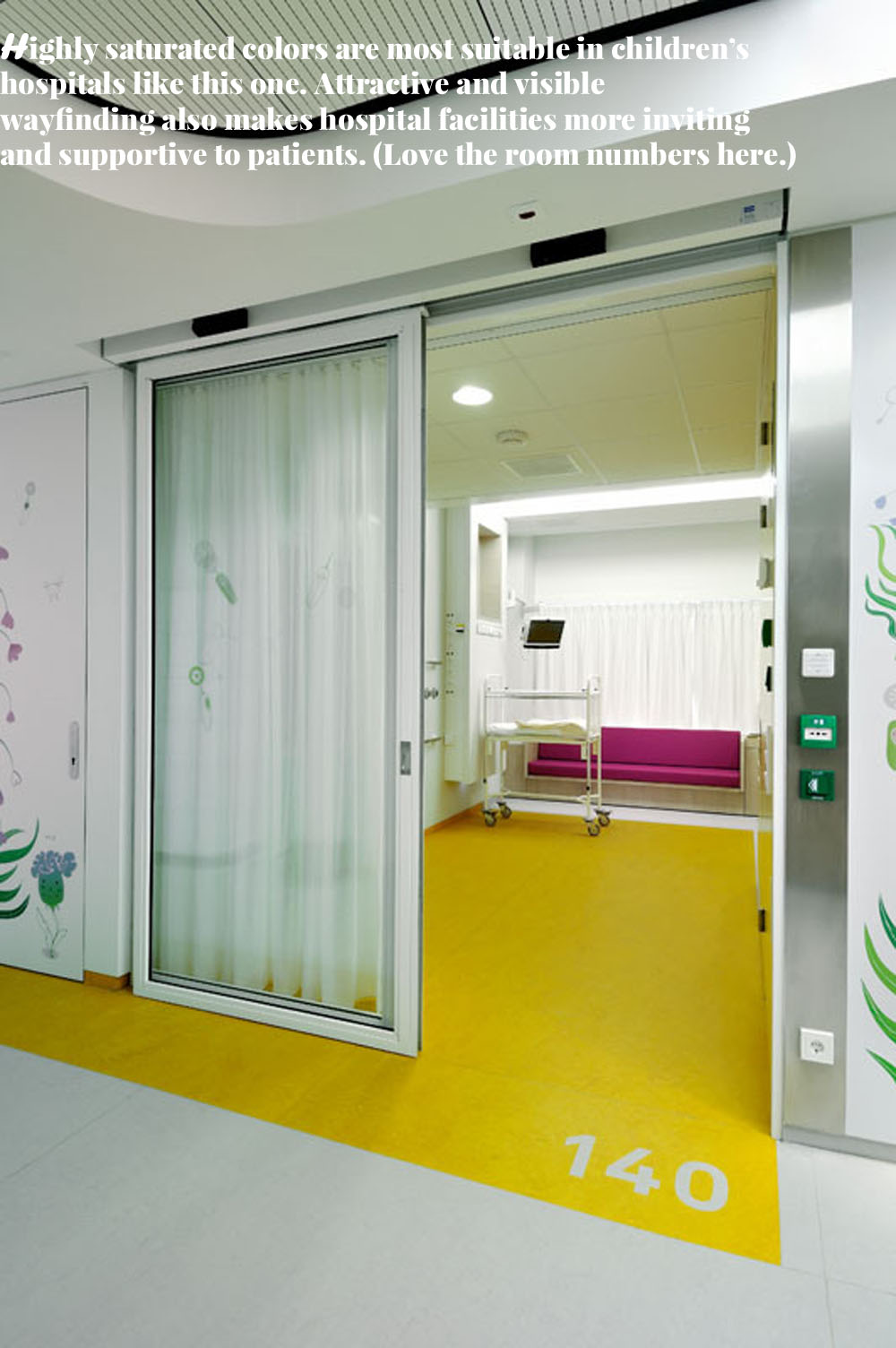 Not too hard, right? My five words were "inspirational," "bright," "refreshing," "greenery," and "liberated." And my idea healing oasis statement read as follows: it's a space that is refreshing and inspirational with bright colors, and a lot of references to greenery and nature. It's makes me feel safe, strong, and liberated.
Not too hard, right? My five words were "inspirational," "bright," "refreshing," "greenery," and "liberated." And my idea healing oasis statement read as follows: it's a space that is refreshing and inspirational with bright colors, and a lot of references to greenery and nature. It's makes me feel safe, strong, and liberated.






